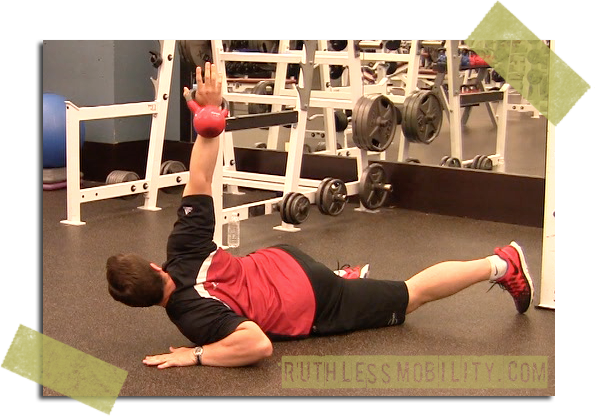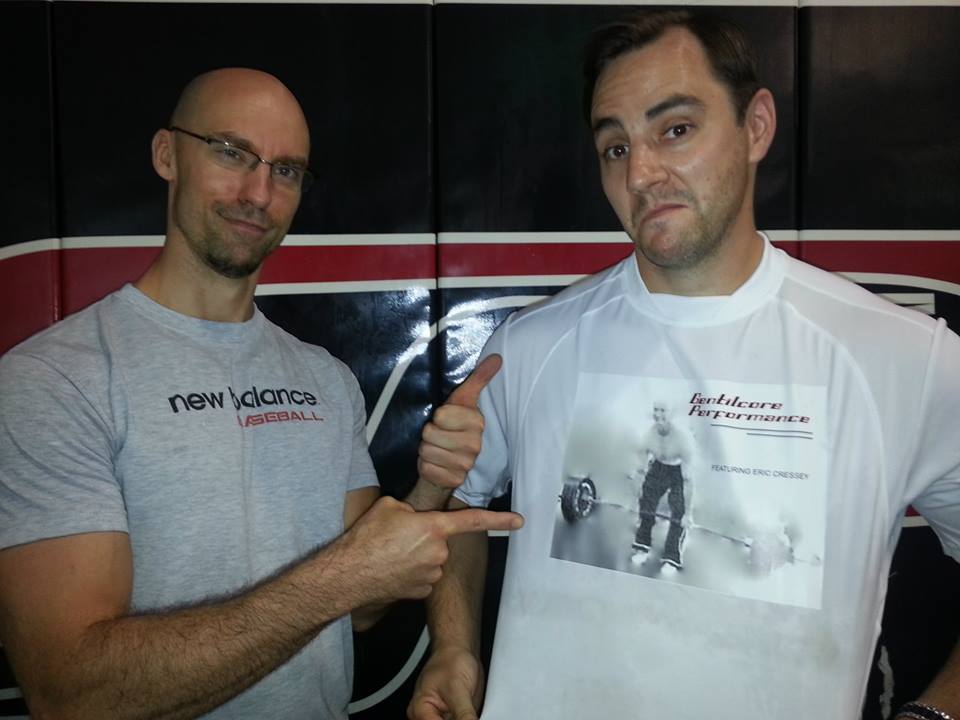Note From TG: It’s July 4th. I’m in Maine. There’s no way I was writing a new post today, so I decided to repurpose the post below.
It coincides with Dean Somerset’s Ruthless Mobility, which is currently on sale at half-off the regular price. The sale ends TODAY.
Toodles!
I started with a new client yesterday. As is the case every time I work with someone new I’ll sit down with him or her (in this case her) and attempt to get all the pertinent information I’ll need to help them achieve their goals and to write an effective training program. Things like injury history, what their training has looked like previously, training preferences, perceived barriers on what’s limited them in the past, favorite 80’s cartoon, you know, all the important stuff.
Please tell me someone out there remembers Disney’s Adventures of the Gummi Bears!?!?! And please tell me someone else out there tried to make their own version of Gummiberry Juice (which, when drunk by humans, gave them superhuman strength) as a kid by combining Mountain Berry Punch Kool-Aid with actual gummy bears???
No? Hahahaha. Well, uh, me neither. That’s just stupid talk! Yeah, that’s what it is……stupid.
So anyways, along with the brief Q&A I’ll also perform an extensive movement screen so I can gain a better understanding of how someone moves and whether or not they present with any distinct compensation patterns which may (or may not) be “feeding” into their dysfunction or pain.
Many people have been programmed to think that increased range of motion is good – and that the more we have of it, the better off we are.
Yes and no.
For those who are stuck starring at a computer for ten hours a day and have little to no amplitude (ROM) in their daily lives (and as a result have the movement quality of a hipster wearing a pair of jeans 3 sizes too small), working on improving their mobility would absolutely be a priority and help to improve performance in the gym and their quality of life.
For someone like the individual I was working with yesterday, however – who had plenty of ROM, to the point where she was borderline hypermobile, yet still was under the impression she had “tight” hips – going out of our way to “stretch the tight” and work on improving mobility could have more deleterious effects than good.
She came in with a history of left hip/ITB pain, and upon testing her hip internal range of motion on that side, it was limited.
Pretty strange for someone with plenty of laxity, right?
As is par for the course, she has spent years stretching her hip in hopes of improving her mobility in an effort to get better.
It hasn’t worked. Yet, I was able to improve her hip IR by a good 10-15 degrees in a matter of 30 seconds without “stretching” her hip. It was priceless to see her reaction when it happened.
So, how did I do it?
I’m Gandalf, duh!
Okay, in all seriousness what I did was work on her REACTIVE STABILITY, which is a term that Dean Somerset has tossed around for a while now.
The Cliff Notes Version: the body will limit a movement into ranges of motion it deems to be either risky, pain producing, or “un-known.”
This is often referred to as PROTECTIVE TENSION, which is what the body creates to help support an injured area.
If I test someone’s hip IR and it’s limited I can’t just assume it’s due to shortness or stiffness of specific muscles. It can definitely be a factor and the main culprit for some people, but it’s something I feel far too many fitness professionals gravitate towards because of an archaic mindset or because it’s “what’s always been perceived as the problem.”
As many of you know Dean (Somerset) and I are good friends. If you ever hear a joke that starts with an American strength coach and a Canadian exercise physiologist walk into a bar……
…..it’s probably us.
He and I have done several workshops together and I’ve had the opportunity to see Dean perform his voodoo assessment stuff each and every time. And it never ceases to amaze me.
One of the best “party tricks” he’ll use in our workshops is exactly the protocol I described above. In short, what he’s found (and I can confirm) is that reduced hip internal rotation is often a symptom of something not working and the body will compensate by forcing surrounding musculature to chronically fire and “tense,” impairing ROM, and thus mobility.
To be more succinct: lack of hip IR = reduced lateral stabilization.
Have someone do a (correct) side plank, have him or her focus on deep, forceful breathing and watch what happens.
Awesomesauce, right?
The side plank helps work on lateral stabilization, which in turn tells the over tensed muscles to chill out, improves reactive stability, which then in turn takes away the “perceived threat” and ROM improves.
It’s not a catch-all for everyone, but you’ll be surprised as to how often it works. I should also note that it’s not something that will stick long-term. Typically the increased ROM will last a few hours, maybe a day. But for something like this to last at least now we know that it’s not a situation where we’re going to tell someone to “just go stretch.” We need to work on improving (lateral) stabilization.
And this is the type of stuff that Dean covers in Ruthless Mobility.

To reiterate, there are PLENTY of people who need to work on improving their mobility in the traditional sense – mobility drills, stretching, etc – and Dean covers that in droves here. So whether you or some of your clients need to work on mobility in specific areas (t-spine, hips, etc), this resource provides a TON of options.
Dean’s not a small human being. He practices what he preaches, and it’s amazing to see how supple he is in his own right! Trust me: you’re going to be watching the videos and think to yourself, “is that Dean Somerset or Houdini?”
But of more value, and more germane to the point(s) I made above, Dean covers stuff that most fitness peeps gloss over or fail to understand altogether. And that’s why I wholeheartedly feel this is THE next “go to” resource on the topic.
Not only do you get 4-5 hours of brilliant content, but you also earn valuable CEUs to boot. So there’s that to consider as well.
Ruthless Mobility is currently on sale at a heavily discounted price, but the sale ends tonight (July 4th). Get on it people. You won’t be disappointed.









